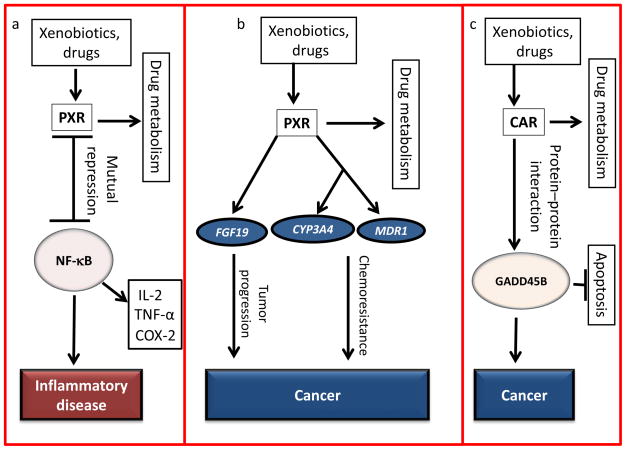Figure 1.
Major human diseases involving pregnane X receptor (PXR) or constitutive androstane receptor (CAR). Various proteins can regulate PXR-mediated signaling pathways and thereby contribute to human diseases. PXR and CAR also regulate drug metabolism. (a) PXR activation can suppress the expression of nuclear factor (NF)-κB proinflammatory target genes interleukin (IL)-2, cyclooxygenase (COX)-2, and tumor necrosis factor (TNF)-α. Inversely, activation of NF-κB signaling and the presence of NF-κB-regulated proinflammatory mediators can suppress gene expression mediated by PXR [37]. (b) PXR activation leads to transcriptional upregulation of cytochrome P450 (CYP)3A4 and/or multidrug resistance protein (MDR)1, potentially contributing to chemoresistance [22,45]; however, PXR-mediated transcriptional upregulation of fibroblast growth factor (FGF19) can promote tumor progression, thus contributing to cancer development [46]. (c) CAR can bind to the antiapoptotic protein growth arrest and DNA-damage-inducible beta (GADD45B) to suppress apoptosis and contribute to cancer development [54]. Arrows indicate activation, stop bars indicate suppression.

